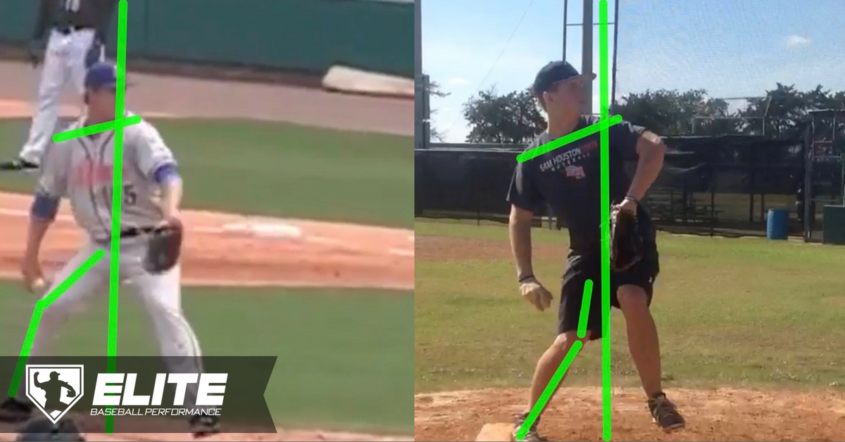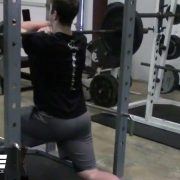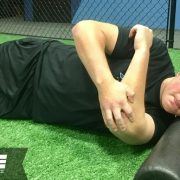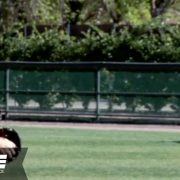The Proper Way For Baseball Pitchers To Push Down The Mound
The pitching motion is an explosive lateral to rotational movement down a hill in under two seconds.
The greatest key component to this explosive movement is “leg drive,” or the moment the pitcher moves down the mound after reaching peak leg lift.
Competing terms like “tall and fall” or “drop and drive” combined with balance and toe tap drills have caused confusion and reinforced slow twitch movements to hinder pitchers’ abilities to complete leg drive athletically and efficiently.
The most common diagram we know in physics is that of the roller coaster on a hill to illustrate potential and kinetic energy.
At the top of the hill, the roller coaster is at peak potential energy. It then converts to kinetic energy as it moves down the slope and gains speed.
A pitcher’s center of mass needs to move with the slope of the mound the same way a roller coaster moves down a hill.
Now, imagine that the roller coaster has a motor to kick-start it down its hill. This motor is the pitcher’s back leg, which is used to create additional force in the ground and accelerate more explosively.
The Load And Go
After peak leg lift, the pitcher needs to focus on driving the rubber back towards second base and pushing his entire body down the mound.
The pitcher will shift weight to the middle/outside of his back foot, stabilize his back knee over his back ankle, and drive his body as a single unit down the mound. The timing trigger for this is hand break.
The pitcher should think two phases: load and go. Leg lift is the “load” where the pitcher’s weight shifts over his back leg. Hand break is the “go” where he explosively drives away from the rubber.
Notice there is no “fall” in the way I describe this move. On the flip side, there’s no drop either.
We DO NOT want the pitcher to sit down or sink his weight into the ground attempting to bend his back leg and push. This is a slowing action that causes the back leg to break down and lead to early rotation.
When doing a box jump, we don’t bend our knees slowly and try to squat down as low as we can to execute the jump. Instead, we move as fast and fluid as we can, causing our leg to bend to a comfortable flexed position (around 45 degrees) and then explode upward.
A Simple Drill To “Load And Go”
If a pitcher thinks “push fast” or “drive fast” away from the rubber with his entire body, the back leg will naturally bend and move efficiently and explosively down the mound. The following drill can instill this intent into a pitcher:
Start at peak leg lift, fully relax the front leg and DO NOT worry about it. It does nothing once in the air.
Hold a counterweight (kettlebell, dumbbell) of some kind to represent the baseball. The counterweight is heavier to cause the pitcher to feel his weight all the way over his back leg at leg lift. It will also help the pitcher lean slightly back during leg drive to not leak energy forward.
Wrap a band for increased resistance to cause more intent in leg drive. However, you don’t need the band to get the movement down.
Drive far out and DO NOT go into rotation. Keep both feet closed and just push sideways. Focus on moving faster and faster out of this position without leaning or sinking in posture.
The bottom line is, when describing the mental approach to leg drive, “tall and drive” much more accurately depicts the movement to your pitcher.
Brantley Freeman
Latest posts by Brantley Freeman (see all)
- The Proper Way For Baseball Pitchers To Push Down The Mound - January 23, 2018
- Defining the Efficient Baseball Swing - August 22, 2017













lunging action, not good
Hey Jose,
Thanks for participating! Explain your comment in a little more detail and I’d love to see if I can communicate the point a little more clearly and make sure back leg action makes sense to you.
Thanks,
Brantley
Oof
Ha get rekted n00b
I like this post and agree with everything stated. I see alot of kids being taught to bend there back knee at the leg kick trying to get there legs and hips working but It skips the whole process of energy buildup and I see alot of strain going on with there arms. I also see a ton of collapsed lead legs all the way through the follow through and kids ending up on their toes. Were talking 11 and 12 year old kids. I think the reason is kids being told to use there legs without better knowledge of whats really going on. Whats the best drill for kids not only to understand proper lower body drive, but one they understand?
Talk to Trevor Bauer about this. You can find him on Twitter.
JD he posted a very good overall explanation of pitching mechanics that I nearly 100% agree with I thought it was great so yes I agree.